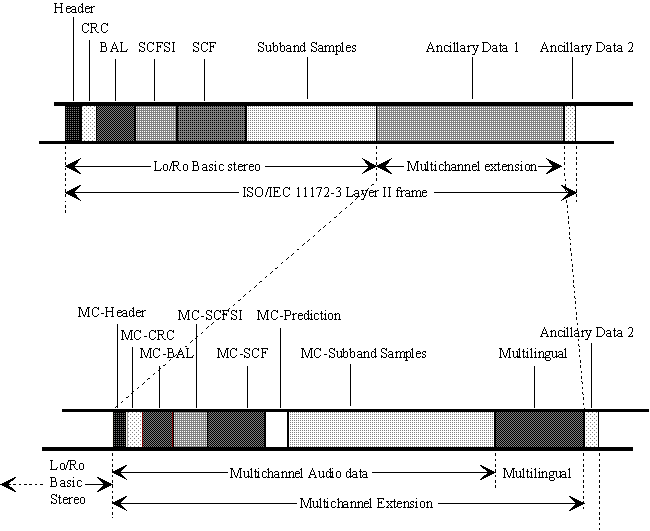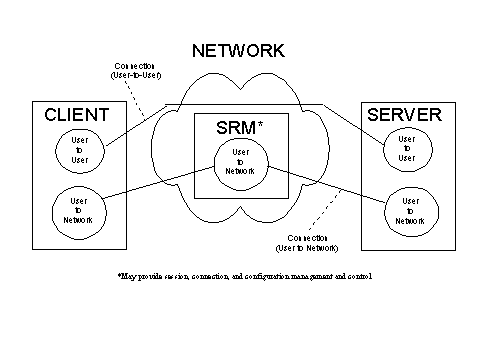INTERNATIONAL ORGANISATION FOR
STANDARDISATION
ORGANISATION INTERNATIONALE DE
NORMALISATION
ISO/IEC
JTC1/SC29/WG11
CODING OF MOVING PICTURES AND
AUDIO
ISO/IEC JTC1/SC29/WG11 N
MPEG 00/
October 2000
| Source: | Leonardo Chiariglione - Convenor |
| Title: | Short MPEG-2 description |
MPEG-2 is a standard currently in 9 parts. The first three parts of of MPEG-2 have reached International Standard status, other parts are at different levels of completion. One has been withdrawn
Part 1 of MPEG-2 addresses the combining of one or more elementary streams of video and audio, as well as, other data into single or multiple streams which are suitable for storage or transmission. This is specified in two forms: the Program Stream and the Transport Stream. Each is optimised for a different set of applications. A model is given in Figure 1 below.

Figure 1 -- Model for MPEG-2 Systems
The Program Stream is similar to MPEG-1 Systems Multiplex. It results from combining one or more Packetised Elementary Streams (PES), which have a common time base, into a single stream. The Program Stream is designed for use in relatively error-free environments and is suitable for applications which may involve software processing. Program stream packets may be of variable and relatively great length.
The Transport Stream combines one or more Packetized Elementary Streams (PES) with one or more independent time bases into a single stream. Elementary streams sharing a common timebase form a program. The Transport Stream is designed for use in environments where errors are likely, such as storage or transmission in lossy or noisy media. Transport stream packets are 188 bytes long.
Part 2 of MPEG-2 builds on the powerful video compression capabilities of the MPEG-1 standard to offer a wide range of coding tools. These have been grouped in profiles to offer different functionalities. Only the combinations marked with an "X" are recognised by the standard.
Tab. 1 - MPEG-2 Video profiles
|
Simple |
Main |
SNR |
Spatial |
High |
Multiview | 4:2:2 | |
|
High level |
X |
X |
|||||
|
High-1440 level |
X |
X |
X |
||||
|
Main level |
X |
X |
X |
X |
X | X | |
|
Low level |
X |
X |
Since the final approval of MPEG-2 Video in November 1994, one additional profile has been developed. This uses existing coding tools of MPEG-2 Video but is capable to deal with pictures having a colour resolution of 4:2:2 and a higher bitrate. Even though MPEG-2 Video was not developed having in mind studio applications, a set of comparison tests carried out by MPEG confirmed that MPEG-2 Video was at least good, and in many cases even better than standards or specifications developed for high bitrate or studio applications.
The 4:2:2 profile has been finally approved in January 1996 and is now an integral part of MPEG-2 Video.
The Multiview Profile (MVP) is an additional profile currently being developed. By using existing MPEG-2 Video coding tools it is possible to encode in an efficient way tow video sequences issued from two cameras shooting the same scene with a small angle between them. This profile will be finally approved in July 1996.
Part 3 of MPEG-2 is a backwards-compatible multichannel extension of the MPEG-1 Audio standard. Fig. 2 below gives the structure of an MPEG-2 Audio block of data showing this property.

Figure 2 -- Structure of an MPEG-2 Audio block of data
Part 4 and 5 of MPEG-2 correspond to part 4 and 5 of MPEG-1. They have been finally approved in March 1996.
Part 6 of MPEG-2 - Digital Storage Media Command and Control (DSM-CC) is the specification of a set of protocols which provides the control functions and operations specific to managing MPEG-1 and MPEG-2 bitstreams. These protocols may be used to support applications in both stand-alone and heterogeneous network environments. In the DSM-CC model, a stream is sourced by a Server and delivered to a Client. Both the Server and the Client are considered to be Users of the DSM-CC network. DSM-CC defines a logical entity called the Session and Resource Manager (SRM) which provides a (logically) centralized management of the DSM-CC Sessions and Resources (see Figure 3).

Figure 3 - DSM-CC Reference Model
Part 6 has been finally approved as an International Standard in July 1996.
Part 7 of MPEG-2 will be the specification of a multichannel audio coding algorithm not constrained to be backwards-compatible with MPEG-1 Audio. The standard has been approved in April 1997.
Part 8 of MPEG-2 was originally planned to be coding of video when input samples are 10 bits. Work on this part was discontinued when it became apparent that there was insufficient interest from industry for such a standard.
Part 9 of MPEG-2 is the specification of the Real-time Interface (RTI) to Transport Stream decoders which may be utilised for adaptation to all appropriate networks carrying Transport Streams (see Figure 4).

Figure 4 - Reference configuration for the Real-Time Interface
Part 9 has been finally approved as an International Standard in July 1996.
Part 10 is the conformance testing part of DSM-CC, under development.